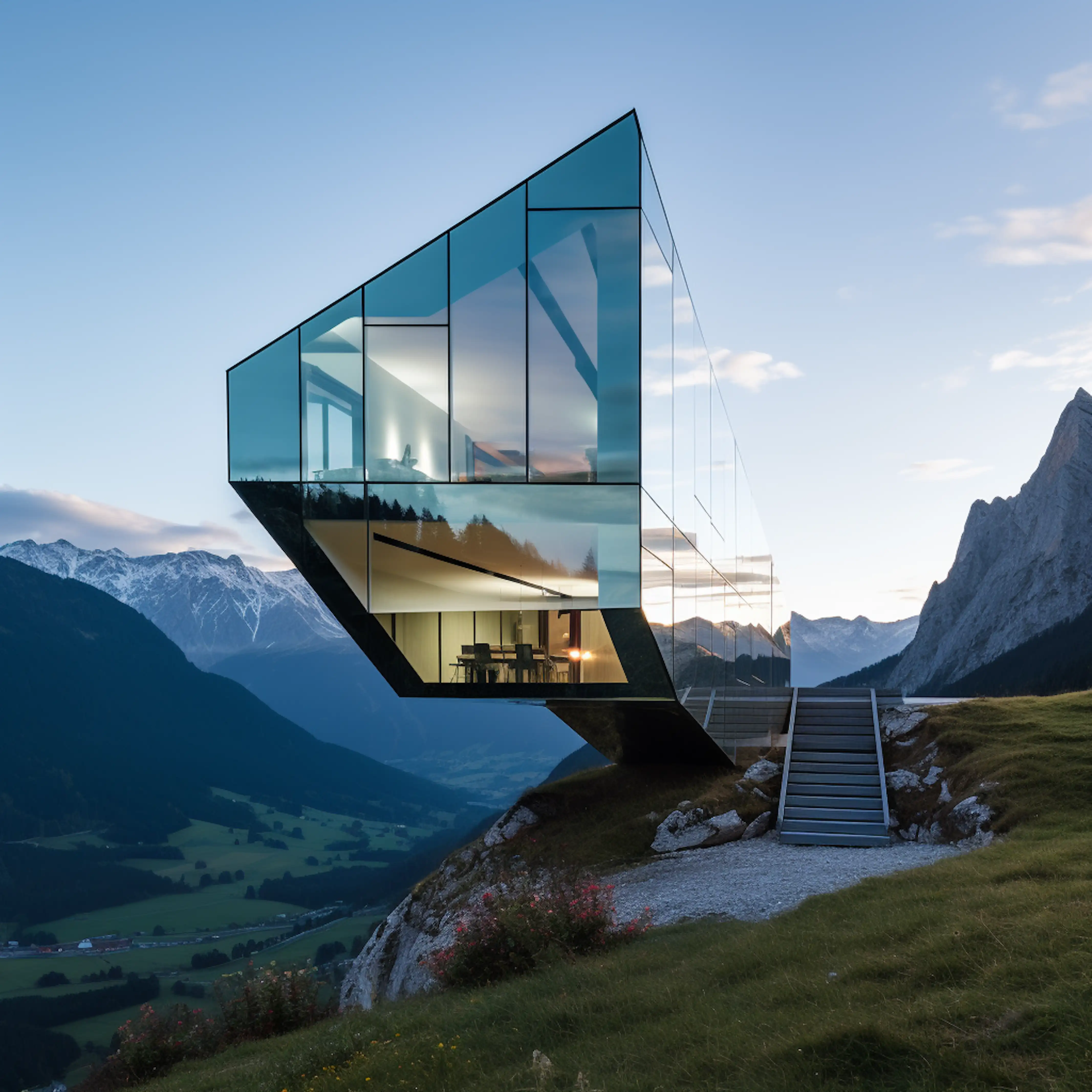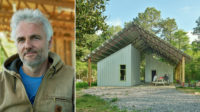Over the past year, the exponential proliferation of artificial intelligence–powered technologies has turned an anxious whisper into a blaring claxon of existential crisis. In a March 2023 report, Goldman Sachs predicted that AI could replace as many as 300 million jobs across all industries globally and estimated that 37 percent of tasks within architecture and engineering could be automated by AI. And while some architects are embracing it with open arms, others warn of AI’s troubling ethical implications and the threat it poses to the profession. Both predictions ring true: AI is both a tool and a crisis, and much may depend on how, and how quickly, practitioners can adapt.
This sea change is playing out in architecture schools, where educators are grappling with how to incorporate AI into curricula even as the technology continues to evolve at breakneck speed. Preparing students for architecture after AI means addressing ethical issues around plagiarism, intellectual property, and privacy, and at the same time facing its potential impact on the labor market.
While some architects have been working with artificial intelligence for decades, the introduction of image-generating software such as Midjourney and Stable Diffusion last summer was a pistol firing for educators in the race to stay at the industry’s cutting edge. “We’re now introducing these programs in our undergraduate program as early as second year,” says Omar Khan, the head of Carnegie Mellon University’s school of architecture, “but they are framed in a way that is critical.” In a February letter, Khan listed AI as one of the school’s three “central pedagogical challenges,” along with climate change and social justice.
With Midjourney, renderings that once took weeks can now be generated within seconds via a text prompt, with results ranging from the mundane to the fantastical. Of course, these are just images—not three-dimensional designs that can be represented in plan and section—but more advanced design programs are in the works. The China-based firm XKool is currently attempting to develop a unified AI program to fill in these gaps.
David Ruy, who leads the postgraduate program at the Southern California Institute of Architecture (SCI-Arc) and has been working with AI in his advanced studios for years, sees a possible positive outcome to widespread use of such technology. Many trace the profession’s attachment to long working hours to architecture school’s studio culture, and he believes that AI’s time-saving capabilities could kick-start a value shift. “When you can type in a prompt and get a rendering that’s better than what you could have produced after a week of work, you have to acknowledge that the real value in education comes in judgment and curation, not elbow grease,” he says.
But these tools can also be abused. Last fall, SCI-Arc faculty became alarmed by a rash of AI-aided “plagiarism” in writing assignments, a problem that has become widespread with the advancement of the text-producing software ChatGPT. Generative software does not copy per se, but it is trained on copious amounts of data scraped from the web, pointing to thornier issues of ownership and originality in AI work. In January, three artists filed a lawsuit against the creators of Midjourney and Stable Diffusion, alleging that the training of these so-called “large language models”—on some 5 billion human-authored images—infringed on the copyright of countless artists. Data is the currency of the digital age, and increasing awareness of its value could lead to future regulation.
Of course, image generators are just the tip of the AI iceberg. For Matias del Campo, director of the Architecture and Artificial Intelligence Laboratory at the University of Michigan, the clamor around Midjourney obfuscates more essential applications of the technology, such as predictive methodologies that can optimize plans or chart urban development. Since 2018, he has been teaching his students to go “under the hood” of AI, to build and program their own datasets. This work, he argues, also helps students grapple with ethical issues like bias in data and privacy.
“A lot of students come in asking, ‘Are we going to lose our jobs? or ‘Are we going to even have jobs when we graduate?,’” says Del Campo. “After a year, they don’t ask that question anymore.” A number of his students have been hired after graduation in new roles that are geared toward AI. One firm, for instance, sought to create a dataset of its past projects; another wanted to develop a program that could perform feature recognition on project sites.
Architect Neil Leach, who directs the Doctor of Design program at Florida International University, is among the bleakest prognosticators of an AI-driven future. Of particular concern to him is AI’s pace of development and ability to train itself. “It’s doing things that we never programmed it to do, and never anticipated that it could do,” he says, predicting that there will soon be nothing that AI can’t achieve, architecture included. Leach’s dystopian view is bolstered by warnings from AI ‘godfather’-turned-whistleblower Geoffrey Hinton, who has called attention to the technology’s capacity to spread misinformation, upend the job market, and, in the longer term, evolve beyond the control of its creators.
Leach is currently working on his third book on AI and architecture, ominously titled The Death of the Architect, which casts AI as the final nail in the coffin of an already beleaguered profession. In our conversation, he oscillated between fear and awe at the technology’s potential, and criticized the naivete of architects who prescribe anything less than a complete overhaul of the profession. I asked Leach if he wanted to “shut it down,” like the group of tech leaders—including Elon Musk and Steve Wozniak—who signed an open letter in March calling for a halt to AI development. “We can’t,” he replied. “The cat’s out of the bag.”

1

2
Recent architectural renderings created by Leach using Midjourney. Images courtesy Neil Leach
I came away from my conversation with Leach with an only slightly heightened sense of dread—the urge to throw my electronic devices into the ocean lasted only a moment—and not yet convinced of AI’s ability to supersede all aspects of human creativity. Even with the assistance of Midjourney, with which “anyone can be an architect” (or at least generate a convincing image of a building), designing well still requires a dense cultural knowledge and a sophisticated critical understanding that can be honed by architectural education. After all, doomsayers have been foretelling the death of architecture since the adoption of computer-aided design in the 1980s.
The real fear is not that AI will necessarily be better than us, but that it will be cheaper, and that our economic system ensures an imminent and devastating fallout. In its wake, the efforts of educators to encourage interdisciplinary collaboration with the fields of robotics, computer science, and data analysis, and to question ideas of sole ownership and lone creative genius that generative technology is provoking, will not only be crucial to the profession’s survival, but may help address such longstanding issues as an unsustainable and sometimes toxic work culture.
New technologies, each promising to be earth-shattering, have been the relentless patter of our times, and it’s difficult to rouse feelings of either promise or fear when flashy new software debuts. But an expanded role for AI seems assured, and will demand a critical and informed understanding, both of the technology itself and of the individual, political, and corporate interests that are propelling it forward. As Khan told me, “The shift that’s coming is not about the tools; it’s about the new world that AI will create.”
With thoughtful integration of AI into the curriculum, educators can equip the next generation of architects with a tech literacy that not only increases output or efficiency but also allows them to see past the hype, toward the structures of power that undergird AI—and then, perhaps, a more nuanced conversation about the role of architects within those structures will emerge.






Post a comment to this article
Report Abusive Comment